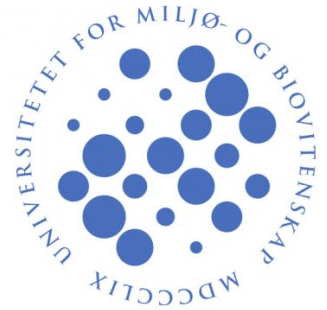Norwegian University of Life Sciences
(Universitetet for miljø- og biovitenskap)
Norway
Shortname: UMB
Description of the organization
The Norwegian University of Life Sciences (UMB) is Norway’s leading research and education establishment in the Environmental and Life Sciences. UMB comprises 7 departments covering a series of scientific fields such as basic mathematics, chemistry, biology and technology, food science and biotechnology, animal and plant science, natural resources and management, and environmental sciences. The Department of Plant and Environmental Science at UMB carries out education and research activities, funded through both governmental research budgets and external research contracts. The Isotope Laboratory is the local radiation protection authority in the Aas campus and is responsible for the education within radiochemistry and radioecology at UMB. The Isotope Laboratory at UMB has, together with the Norwegian Radiation Protection Authority and four other Norwegian research institutes received the status “Centre of excellence” funded by the Norwegian Research Council. The centre is called “Centre for Environmental Radioactivity” (CERAD).
Main tasks attributed / previous experience related to those tasks
The Isotope Laboratory in the Department of Plant and Environmental Sciences (IPM) at UMB has an internationally recognised expertise in environmental risk assessment of radionuclides and other pollutants, and especially source-term speciation, radioecology and risk management. The department has been actively involved in EU projects within the nuclear education and training area (EURAC, ENEN-II, CINCH), and in EURATOM projects within 3rd - 7th FP (ARMARA, ADVANCE, REMOTRANS, ESTABLISH, ERICA, STRATEGY, EURANOS, PROTECT, STAR, DoReMi), and has experience from more than 50 national, bilateral and international projects (NATO, IAEA etc.) during the last 20 yrs. During the 6FP projects EURAC and ENEN-II, they took the lead and implemented the European MSc Program in Radioecology. This experience will be provided to the CINCH-II, especially into WP1, WP2 and WP4.
Short profiles of the key staff members
Prof Lindis Skipperud is deputy head of Environmental Chemistry section/ Isotope Laboratory within the Department of Plant and Environmental Sciences at UMB. She is also Education Director of the CERAD centre. She has more than 15 years of experience within radiochemistry, radioecology and environmental chemistry. She has participated in several international research projects, including EUFP 3rd – 7th projects, over the years. She is responsible for managing courses and laboratory training at the Isotope Laboratory and is substantially involved in all post-graduate education including the implementation and running of the European MSc program in radioecology (EURAC, ENEN-II, STAR and CINCH).
Prof Brit Salbu is head of the Environmental Chemistry section/Isotope Laboratory within the Department of Plant and Environmental Sciences at UMB. She is also the centre director of CERAD. She has more than 25 years of experience in radiochemistry, radioecology and environmental chemistry including impact assessment. She has more than 20 years of experience in teaching, and was responsible for the implementation of the MSc in Radioecology. She has participated in more than 50 national, bilateral and international projects – including 15 EU projects within FP 3rd – 7th.
